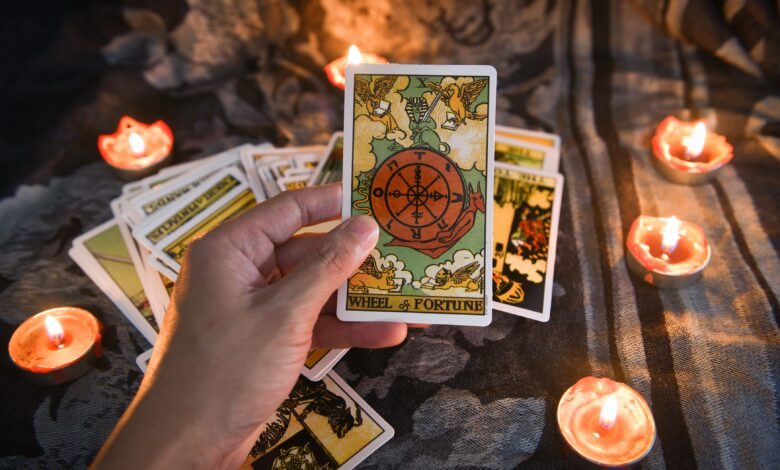
6 Things You Need to Know About Tarot: A Guide
The tarot is perhaps the most well-known method of divination – or fortune-telling. Modern decks are comprised of seventy-eight cards, made up of the major arcana and the minor arcana. The guide below delves into the history of these special cards, how to choose a deck, and how to begin using it.
1. The Origin Of Tarot

The forebears of the tarot cards we know today can be traced back to Europe, around the fourteenth century, when artists were beginning to design the first-ever cards to be used in game-playing: the suits created were Wands, Swords, Cups, and Coins ( or Pentacles), just as appear in tarot decks today. Shortly after the suits were developed, artists in Italy began painting additional cards that were much more intricate and heavily illustrated; these were subsequently incorporated into the deck. These special new cards were known as ‘trumps’ or ‘triumphs’ and tended to be created by artists as commissions for wealthy patrons.
Once the printing press was invented in the fifteenth century, the decks of cards could be mass-produced and made available to the ‘common’ people.
Tarot did not become widely used for divination until the late sixteenth century, and by the eighteenth century, set meanings had been assigned to each of the cards, and methods of divining with them had been formalized.
2. How To Choose a Deck
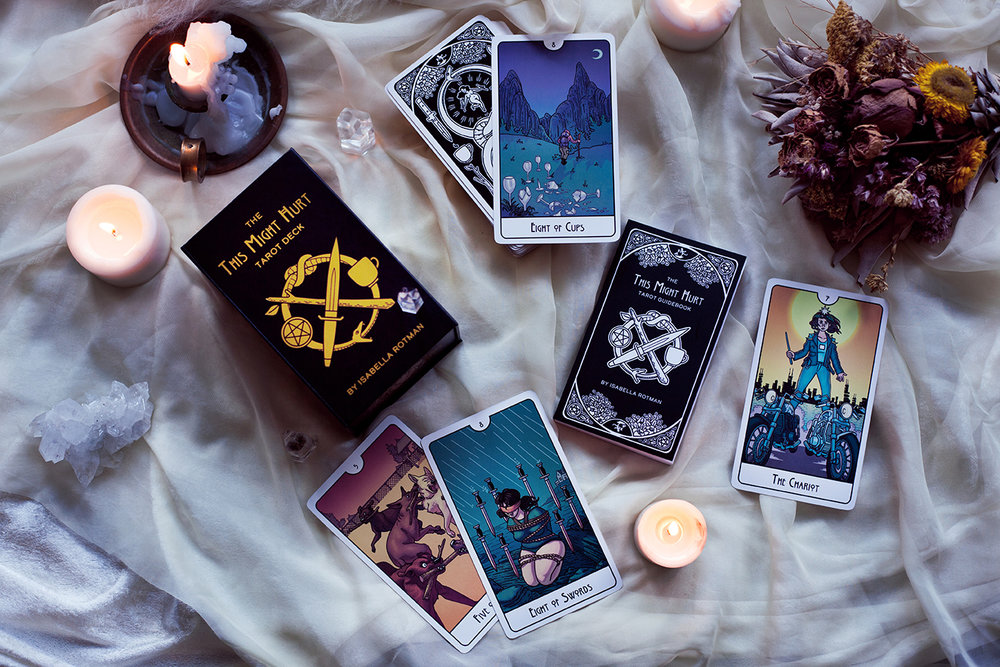
Choosing a deck is a highly personal affair. The most well-known tarot deck is probably the Rider-Waite version; however, there is a vast range of decks available, illustrated in a near-infinite number of styles and designs. You may want to choose a deck that you simply feel drawn to, or you may select a deck based on your personality: for example, if you love to be outside and in the open air as much as possible, you could choose a deck that features images from the natural world, and is inspired by the elements. There is no right or wrong choice: simply select the cards that feel right to you.
It is traditional to keep a tarot deck wrapped in a square of silk fabric when it’s not in use. Choose a color that you love to wrap your cards and keep them safe; you may also want to find a special box to protect them.
3. The Major and Minor Arcana
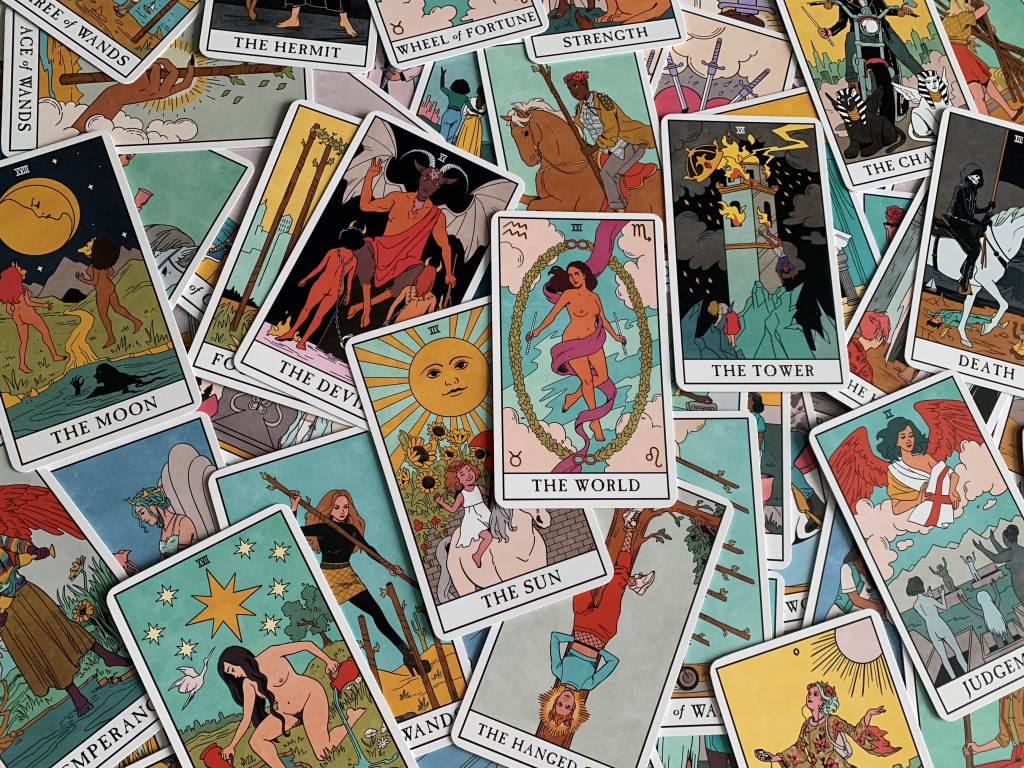
A tarot deck is made of the major and minor arcanas. The minor arcana is made up of the suit cards, running from the Ace to the King. The tarot has four suits: Pentacles, Swords, Cups, and Wands (or Staves), and each relates to one of the four elements. Pentacles are connected to Earth, Swords to Air, Cups to Water, and Wands to Fire.
The major arcana comprises twenty-two unique cards, running from 0, The Fool, to the final card, The World. For more information on the meanings behind the tarot cards major arcana, have a look at this article. In reading, all of the cards are usually mixed and used together, although some people may prefer to work with just the major arcana for some readings or to answer a specific question.
4. How to Use Your Cards
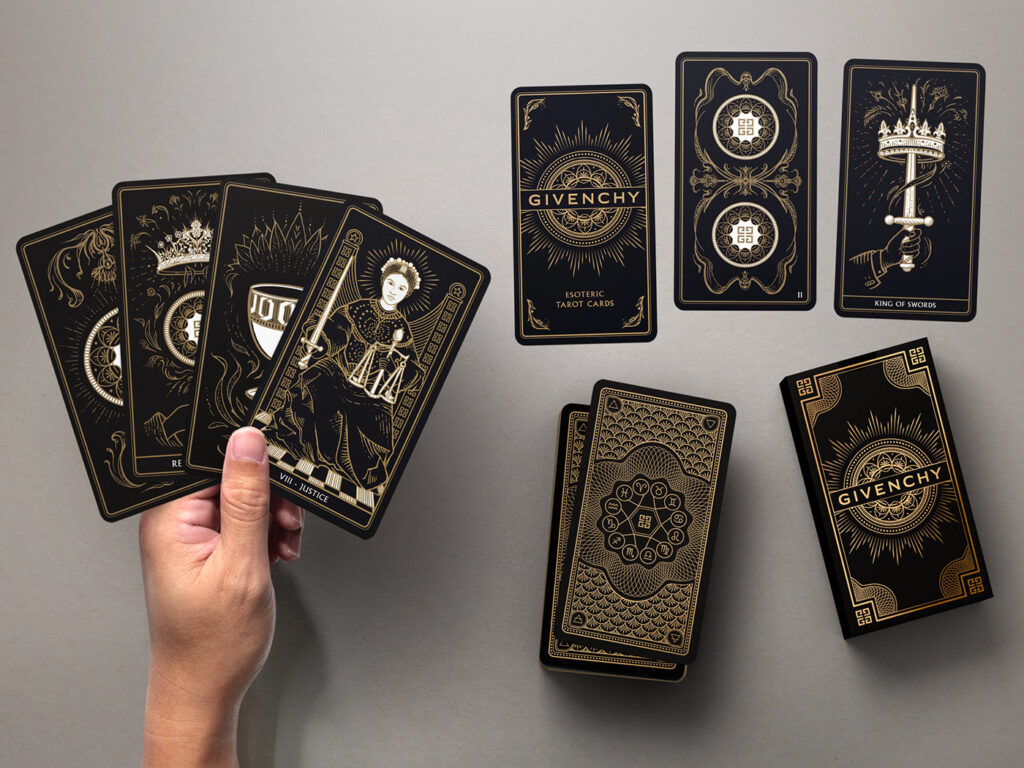
Divination is the most well-known way to use tarot cards, and we cover a few basic spreads below. Divination involves seeking to find out what the future holds for us and how we can change the course of events that would otherwise unfold if we so wish. However, the cards can be used in other ways, too.
Tarot cards can be used to meditate with; simply pick a card that you are drawn to or that you feel relates to a situation you are facing, and then spend some time quietly contemplating and reflecting on the image. This can be a great way to focus your thoughts and use the imagery of the card to offer a new way of approaching the problem or circumstance that is presenting itself.
You could also choose a card from the deck at random and use it as the focus of your day. For example, pulling The High Priestess, with her quiet confidence and advocation of trusting our own instincts, could be helpful in how we navigate the day we are about to embark upon.
5. Basic Tarot Spreads
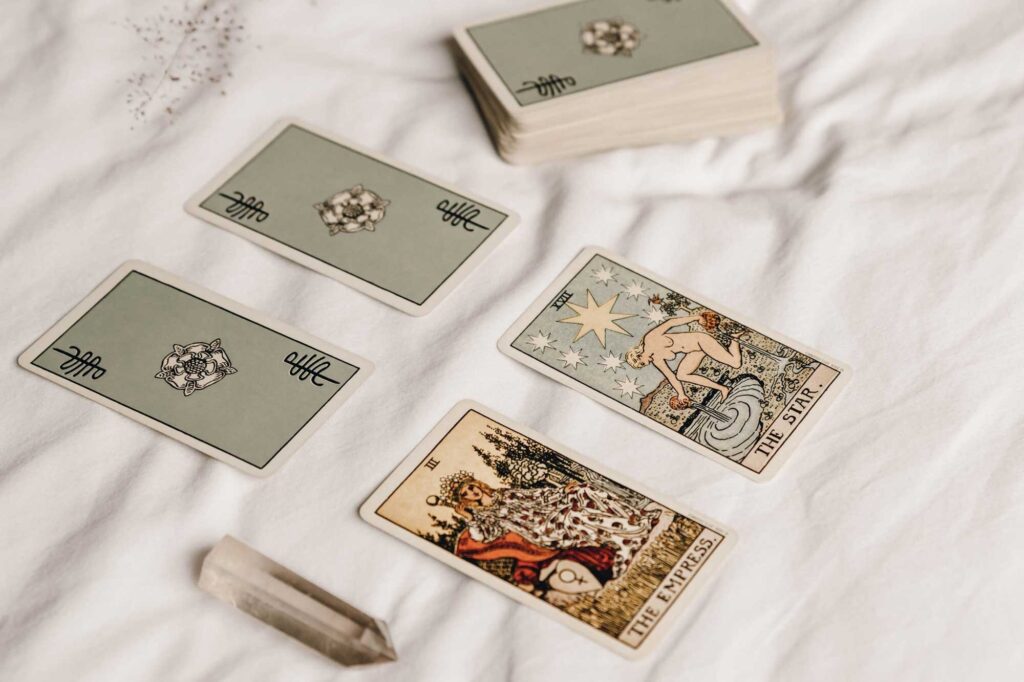
There are almost limitless types of tarot spreads; for the beginner, it may be a case of trying a few spreads and seeing which one you get on with best and makes the most sense to you.
One of the simplest spreads is the three-card Past, Present, Future option. All you need to do is mix your cards, concentrate on the question you would like to ask, and then pick three and turn them. The first card represents your past, the second your present, and the third your future. Let’s say you asked about how you should progress your career; that’s been stuck in a rut recently.
The Seven of Cups comes up in the Past position, which suggests that you have been prone to get stuck when too many opportunities present themselves and can find making a decision hard on which one to go for tough which has meant, in the past, you’ve simply done nothing, and let all of the possibilities slide. In the Present position comes The Fool, indicating that the time is right to set out on new adventures and to make the leap into the unknown. The World appears in the Future position, intimating that your willingness to be brave and strike out in your career will produce spectacular results.
You could also try the easy two-card ‘Situation’ and ‘Advice’ spread. As above, mix the cards and then pull two from the deck. In this scenario, let’s say you have kept in mind your romantic situation; you’ve been dating for a while but haven’t found The One and are becoming disillusioned with the process. From the deck, you pull The Ten of Wands: this suggests that the dating journey is becoming a burden; that, although success may be close, you are tired. For ‘Advice,’ you pull The Hermit. This would suggest that the answer to the dilemma is to withdraw for a time to rest and, through a period of introspection, gain some clarity and perspective on the situation.
6. Keeping the Cards in Your Life
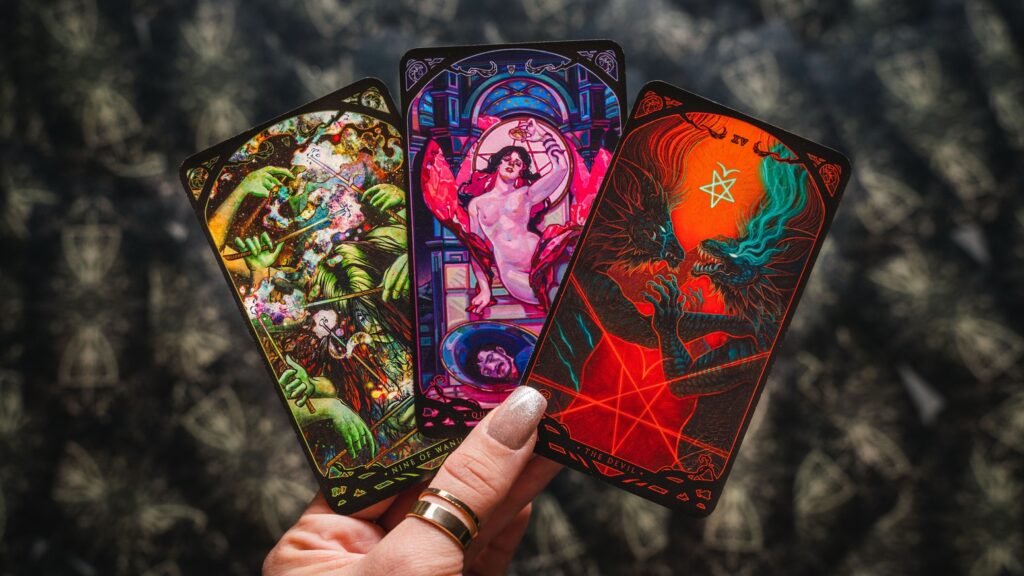
Being able to read the cards intuitively comes with practice, so try to take some time to spend or work with your deck every day, whether that’s to lay a spread or simply to contemplate and get to know individual cards. In time, you will develop your own unique style of reading or divination.




